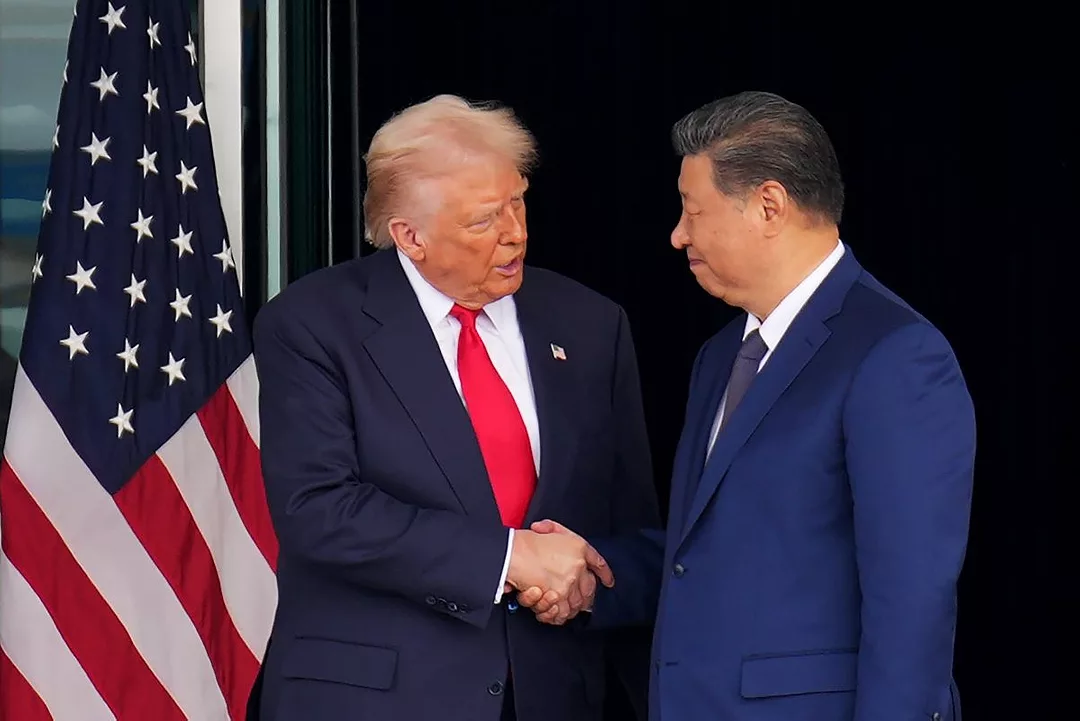During a recent meeting aboard Air Force One, U.S. President Donald Trump announced a temporary agreement with Chinese President Xi Jinping regarding the contentious issue of rare earth exports. This marks their first discussion since Trump resumed office in January, where he claimed both leaders had “settled” significant differences.
The agreement involves a one-year pause on China’s planned export controls for critical minerals essential for various industries, such as semiconductors and electric vehicles. Trump described the situation as having “no roadblock at all on rare earth,” expressing optimism that the issue would soon be less prevalent in discussions. However, while this may seem like a victory for the global economy, the existing restrictions remain in place, leaving U.S. companies reliant on Chinese supplies.
Negotiation Dynamics
In exchange for China’s commitment to delay its export restrictions, the U.S. has agreed to postpone its own expansion of the export blacklist, which could have added thousands of Chinese firms to the list. Despite this pause, U.S. Trade Representative Jamieson Greer acknowledged that the agreement does not significantly shift the landscape, as China’s existing controls remain intact.
The White House has yet to release a formal summary of the meeting’s outcomes, while the Chinese commerce ministry published details on October 30, 2025. Critics of the agreement, including experts from the American Enterprise Institute, argue that it showcases a troubling trend in U.S.-China negotiations, where American concessions may set a dangerous precedent.
Chris McGuire, a former National Security Council member, stated, “The Chinese rare earth controls were a massive escalation… Instead of pushing back, we agreed to roll back our controls.” This sentiment reflects a growing concern about the bargaining power China holds over the U.S. in these negotiations.
Implications for Industry and Future Talks
The current arrangement functions as a temporary ceasefire, which may ultimately benefit China more than the United States. Experts point out that the U.S. measures, which are more targeted, require frequent updates to remain effective. As such, the existing status quo could persist, leaving critical industries vulnerable to China’s export policies.
China’s export restrictions on rare earths began in April 2025, and subsequent months have seen escalating tensions and retaliatory measures from both nations. In the lead-up to this week’s meeting, Trump proposed significant tariff increases but later retracted these threats, along with tariffs on Chinese goods related to the fentanyl trade.
With the Supreme Court poised to hear arguments next week regarding the legality of Trump’s tariffs, the president’s strategies may face further scrutiny. Should the court rule against him, the implications for U.S. trade policy could be profound.
Despite these developments, not all outcomes were favorable for Xi. Trump declined to approve the sale of Nvidia Corp.‘s advanced Blackwell AI chips to China, although there are expectations that approval might come in the future. The lack of concrete plans for increasing Chinese investment in the U.S. further complicates the relationship.
As discussions between the two leaders continue into 2026, the risk remains that these agreements may not lead to meaningful change for industries reliant on rare earths. Industry insiders highlight that while the temporary pause offers some relief, the underlying issues tied to China’s export controls persist. “This China-U.S. truce was a lot about everything but rare earths,” noted Wade Senti, president of Advanced Magnet Lab Inc.
The ongoing challenges in navigating U.S.-China trade relations illustrate the complexities both countries face as they attempt to balance economic interests with national security concerns. As negotiations progress, the stakes remain high for industries dependent on rare earth materials, highlighting the necessity for a more comprehensive and lasting agreement.







